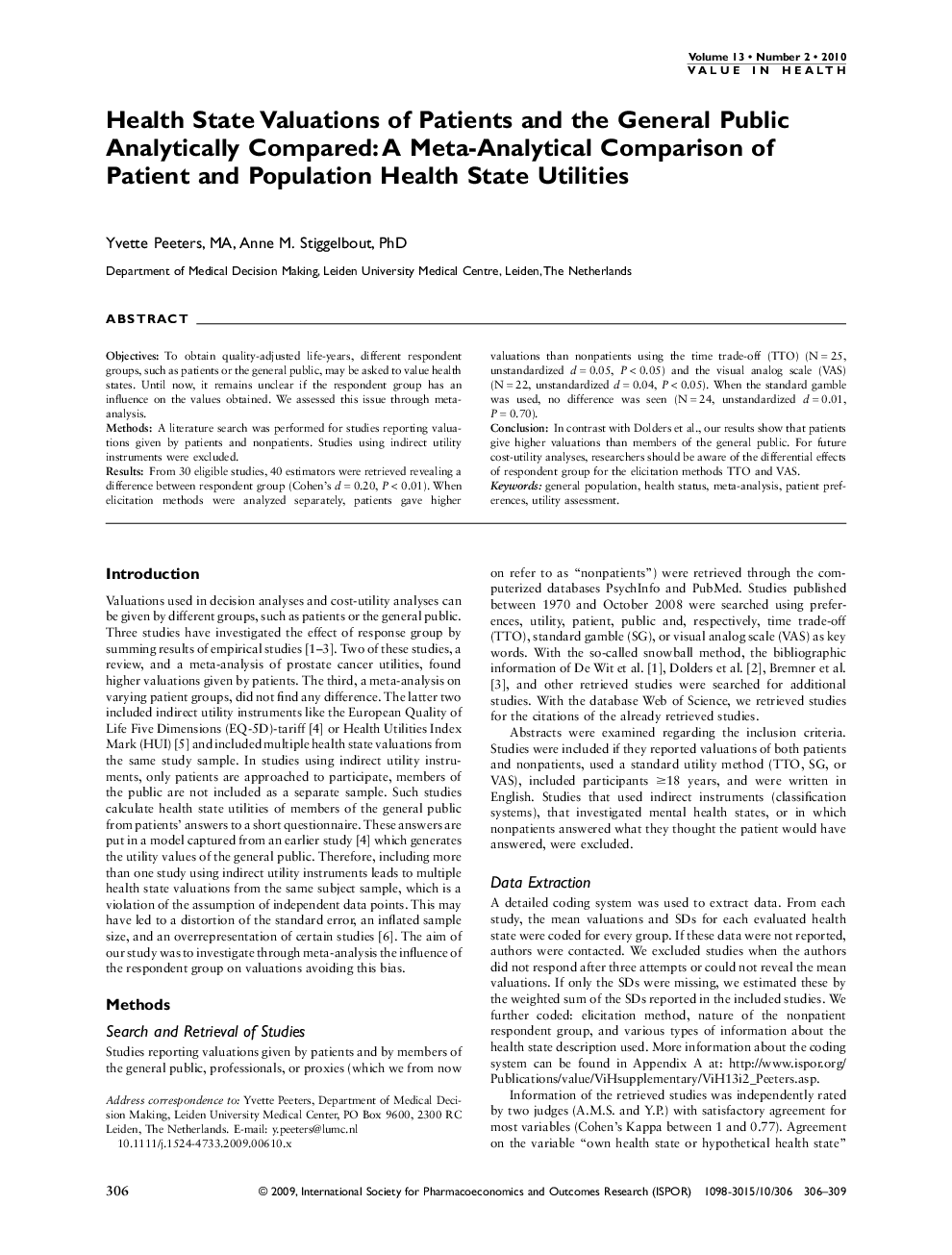| Article ID | Journal | Published Year | Pages | File Type |
|---|---|---|---|---|
| 991487 | Value in Health | 2010 | 4 Pages |
ABSTRACTObjectivesTo obtain quality-adjusted life-years, different respondent groups, such as patients or the general public, may be asked to value health states. Until now, it remains unclear if the respondent group has an influence on the values obtained. We assessed this issue through meta-analysis.MethodsA literature search was performed for studies reporting valuations given by patients and nonpatients. Studies using indirect utility instruments were excluded.ResultsFrom 30 eligible studies, 40 estimators were retrieved revealing a difference between respondent group (Cohen's d = 0.20, P < 0.01). When elicitation methods were analyzed separately, patients gave higher valuations than nonpatients using the time trade-off (TTO) (N = 25, unstandardized d = 0.05, P < 0.05) and the visual analog scale (VAS) (N = 22, unstandardized d = 0.04, P < 0.05). When the standard gamble was used, no difference was seen (N = 24, unstandardized d = 0.01, P = 0.70).ConclusionIn contrast with Dolders et al., our results show that patients give higher valuations than members of the general public. For future cost-utility analyses, researchers should be aware of the differential effects of respondent group for the elicitation methods TTO and VAS.
